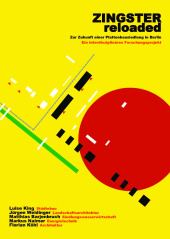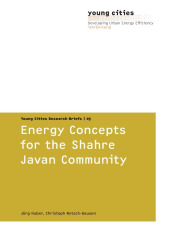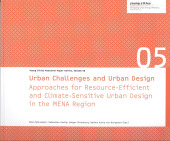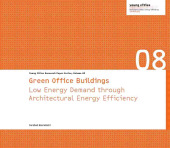Guidelines for the Sustainable and Energy Efficient Architecture of the LIFEcenter
Design, Planning and Realization of a Vocational Training and Information Center in Tehran Region

Format: 14,8 x 21,0 cm
Publishing year: 2013
“Nowadays architects and building designers are concentrating on issues of sustainability, energy and resource efficiency. These design parameters have become a main factor of building quality in recent years.The research project Young Cities deals with this perspective for creating up-to-date projects of urban design and architecture in the semi-arid regions of Iran. The aim is to develop a functioning and lively city on the outskirts of Tehran, which provides both residential space with the necessary infrastructure and public facilities for a fast increasing population.Within this integrative project a group of architects designed different architectural pilot projects each with a different basic function: residential buildings, an office building and a building for vocational training, education and various supporting functions. The building for vocational training and information is a pilot project for demonstrating the sustainability and energy efficiency on the building level on the one hand and social and cultural designing on the other hand. The energy efficiency arrangements, which are applied in the project, are, however, diverse, and cover architectural as well as constructional aspects. Intended as a direct and applicable handbook for the design, planning and operation of a building for vocational training and information in the building sector by reflecting the project as reference, this guidebook shows a way to create a high quality and sensitively adapted building with an effective, cost-neutral and economically efficient planning concept to focus on the energy efficiency, especially through architectural design, as well as on social and cultural aspects of building design. The optimized architectural concept can be developed on basis of this guideline for semi-arid regions by not increasing building costs. Therefore it contains:• The issues of the necessity of energy efficient architecture and the objectives of modern and adapted design in combination with economical efficiency• Relevant facts for building planning, especially “”passive”” aspects of sustainable architectural design• Planning methods and approaches for evaluation• A list of common and innovative building materials from sustainable aspects• The planning documentation in an overview of the exemplary architectural pilotThis guidebook operates as an essential reference for climate adapted and sensitive architecture for architects and building designers and as a source of ideas for the creation of the integrative hybrid building complex of a LIFEcenter for vocational training of construction workers, seminars for academics and information and exhibitions for other building interested.”



